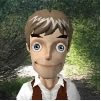Monday, May 28, 2012
Behind the Scenes
I began buying records in the Beatles era, and in that pre-internet, pre-Rolling Stone time, you had to parse whatever information you could from the LP credits themselves, not always the best source, it turns out.
Jump ahead to the '70s: liner notes include musician credits. Many of the same names crop up over and over again, and that's when I learned about studio musicians, professionals hired by the hour to deliver whatever the songs needed. (Later, the "professional" part became the problem for many bands -- too slick for rock and roll? And yet, Steely Dan treasured just that professional slickness to add that sonic sheen they desired so much. Go figure.)
As rock bands decided they were indeed bands, the ground shifted. The band members played their own instruments and wrote their own songs. (Here's that Beatles thing again -- oh, and yes, the evolution of the Monkees.) The studio musicians from the Phil Spector/early Beach Boy era were no longer in demand, and there was another crop of long-haired, more 'hip' musicians ready to take their place.
"The Wrecking Crew: The Inside Story of Rock and Roll's Best-Kept Secret" by Kent Hartman is about the earlier bunch, guys (and Carol Kaye on bass!) who performed the 'band' functions on Phil Spector sessions, plus records by the Beach Boys, Gary and the Playboys, Gary Puckett and the Union Gap, the Turtles...really, the list goes on and on. You might hear the same approaches on different sessions -- "She's Just My Style" by Gary Lewis and the Playboys owes a lot to the Beach Boys sound -- because the same musicians played both sessions. And it wasn't only the musicians; there were songwriting factories (like the Brill Building, home to Neil Sedaka, Carole King, etc.)
So what? Well, the book either ignores the elephant in the room, or just leaves the reader to discover it themselves. Here's my take: when the Wrecking Crew played on Phil Spector sessions, we never thought there was a 'band' -- we heard the vocalists plus musicians, as you would a big band or an orchestra. Fine. But when as a pre-teen thirsty for knowledge I pored over those Gary Lewis and the Playboy albums -- they portrayed the photogenic band member playing the bass --which he didn't!??! Example: all these '60s bands mime to backing tracks on Ed Sullivan, say, but they're faking not only that they are playing live, but that they ever played that music at all. Ever. Concert tour sound at that time was so crappy and the venues so ill-suited for amplified music that audiences never noticed that they were getting a poor approximation of the songs they knew from radio.
That was then, right? The whole "band as contained unit" lasted a while, but then MTV arrived, and suddenly you didn't need talent if you looked good. Now we were inundated with photogenic puppets. The session musicians were replaced by studio technology and computer techs, but they still needed songs. The Brill Building was gone, but there were more songwriters just waiting for their turn at the trough. The more things change...
Wednesday, May 2, 2012
Bluegrass Across the Years
A pair of fairly recent DVDs that show two very different views of the bluegrass world. "Bluegrass Country Soul" was filmed at a bluegrass festival in 1971, and it shows a genre in flux. "Traditional" bluegrass was flummoxed by the popular long-hair culture -- how do we keep current without betraying our roots? I'm sure at the time some of the crossover song choices were considered radical (John Denver! Elton John!!) and it's weird seeing Earl Scruggs in short hair and short sleeves playing with his far more hirsute offspring.
We also get to see Ralph Stanley (long before "O Death" but still every inch the patriarch), J.D. Crowe (with a young chubby-faced Tony Rice -- who doesn't even get to solo!), Chubby Wise playing his trademark "Orange Blossom Special" with the biggest grin on his face, and Bluegrass 45, a band of young Japanese men that elicits one of the biggest responses from the crowd. But my favorite has to be the Stanley Brothers. They play like they could do it in their sleep, but I never felt they were phoning it in -- and "Ruby" still has all those hill-holler piercing high notes.
Jump ahead 30 years, and you get "Bluegrass Journey", recorded at the Grey Fox Bluegrass Festival in 2000. We get to see performers from "Bluegrass Country Soul" like Del McCoury and Tony Rice, but this DVD includes the full festival experience, which by now includes the special instrumental workshops and the crazy jamming through the night at the official hotel (I REALLY need to get to Wintergrass in Bellevue next year).
Highlights for me: Peter Rowan performing "The Hobo Song" that he recorded with Old & In the Way which featured Jerry Garcia and started me on the road to bluegrass, Nickel Creek stretching the boundaries with "Old Cold Coffee On the Dashboard" (oh, wait, it's just a variation on what David Grisman was doing in, umm, 1976, but okay, I still like it), and yes, you guessed it, Tony Rice performing his medley of "Shenandoah" and "Danny Boy". I also love the energy in the hotel, from the lobby where old friends meet again to the hallways and rooms where all the jam sessions happen. The scenes from the International Bluegrass Music Association's "World of Bluegrass" (the bluegrass Grammys) show we're a long way from 1971. Two DVDs, two very different looks at a fascinating culture.
And RIP, Earl. His performance in "Bluegrass Country Soul" shows a gracious, humble man, performing with so many of the people he influenced. Priceless.
Subscribe to:
Comments (Atom)







